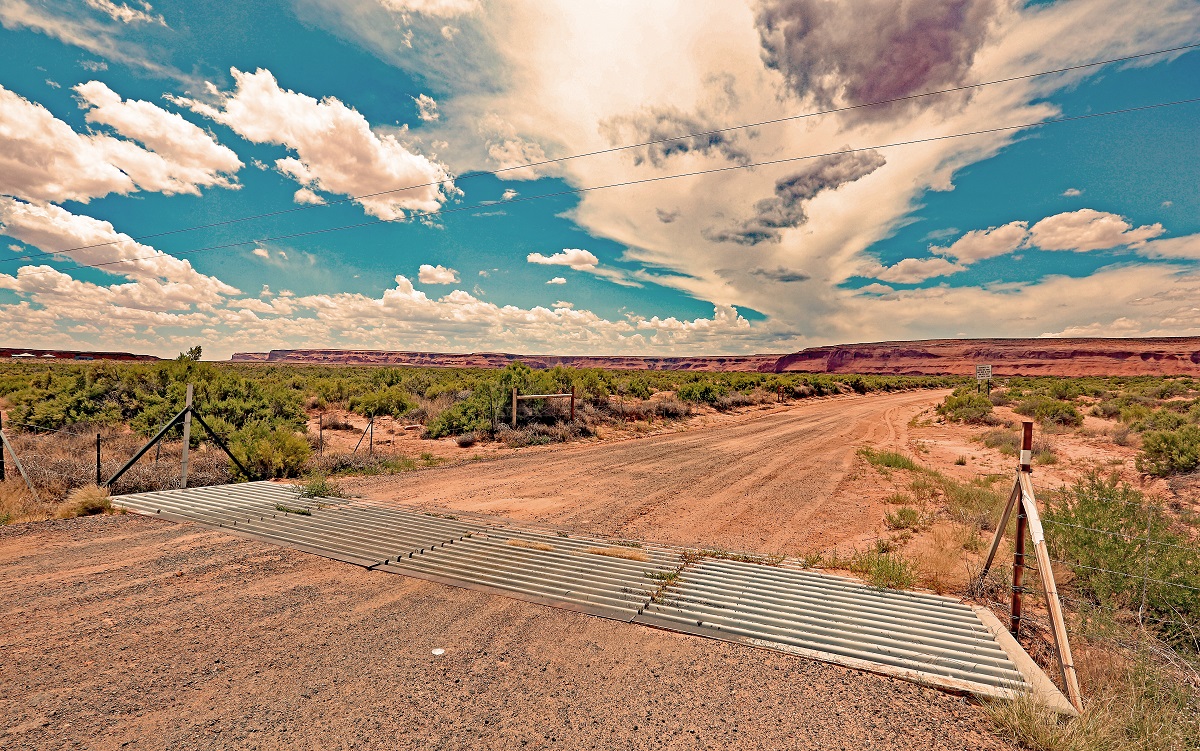Six Road Hazards to Heed
Traveling cyclists must consider many things when preparing for a stint on the road, and we tend to focus our attention on things related to food, shelter, and routes. However, as loaded touring cyclists, we may need to pay more attention to another item: road hazards.
On unloaded, go-fast bikes, it’s easier to stop or maneuver quickly around hazards. But on our gear-laden, traveling steeds, the following road features can quickly become pitfalls.
1. Cattle guards
These grids of metal slats found across the rural US keep cattle and other livestock from crossing into other pastures and can be a threat to cyclists if not approached with caution. A heartbreaking example occurred just this summer when cyclist Frank Uher, traveling from Missoula to Denver with his brother and friends, approached the Split Rock National Historic Site. Frank’s front wheel was caught in a gap in a cattle guard, causing him to lose control and be thrown from his bike. He landed head first on the pavement and passed away at the scene.
The design of the four-panel cattle guards makes them particularly hazardous, so the Bureau of Land Management is working with the state of Wyoming to create a safer design and place hazard signs at the cattle guards.

When approaching any cattle guard, cyclists should be aware that the spacing between slats can vary, and there may be other gaps associated with the guard. It’s best to cross slowly, as perpendicular as possible, and when in doubt, walk your bike.
2. Dogs
Though Kentucky often gets a bad “rep” for dogs, loose Fidos can be encountered anywhere. While chasing moving objects is an innate behavior for dogs, most canines aren’t out to viciously attack. The best method of defense is to stop riding, get off the bike and keep the bike between you and the dog.
3. Railroad crossings
Most traveling cyclists will encounter railroad crossings on tour, and will often go out of the way to avoid the worst of them on commutes and recreational rides. Most importantly when crossing, check for trains and traffic and cross the tracks at a 90-degree angle or perpendicular to the gaps. This means you might have to veer across the road in order to stay perpendicular to the tracks, so cross only in low or no traffic.
4. Thick gravel and chip seal
Gravel and chip seal can cause instability and difficulties while pedaling down the road. On my recent long-distance trip, I unwittingly routed myself onto a number of Wisconsin “rustic roads” and endured some of the scariest, most difficult riding of my 2000 miles. I frequently felt as though I was about to fall over. Holding a steady line proved nearly impossible. I quickly routed myself over to the parallel highway and breathed a sigh of relief.
5. Menacing metal
Manhole covers, sewer grates, open grated bridges — all of these have three words in common: slippery when wet. Not only could your wheels slide out from underneath you, but metal can also be loose or uneven, causing pinch flats. Some have gaps, causing your wheels to become trapped. It’s best to avoid them but if you must ride over them, ride straight and try to refrain from braking or turning.
6. Cracks, filled and unfilled
Roads settle and heave, and sometimes the resulting cracks can eat your wheel. It’s best to avoid them if you can and cross them as perpendicularly as possible when you can’t. The flip side of these cracks is when they’ve been repaired and filled with tar: on particularly hot days the tar reheats and turns squishy and slippery. This is a hazard, not only on roads but paved, multi-use paths.
This story has been updated and was originally published on October 18, 2017.


